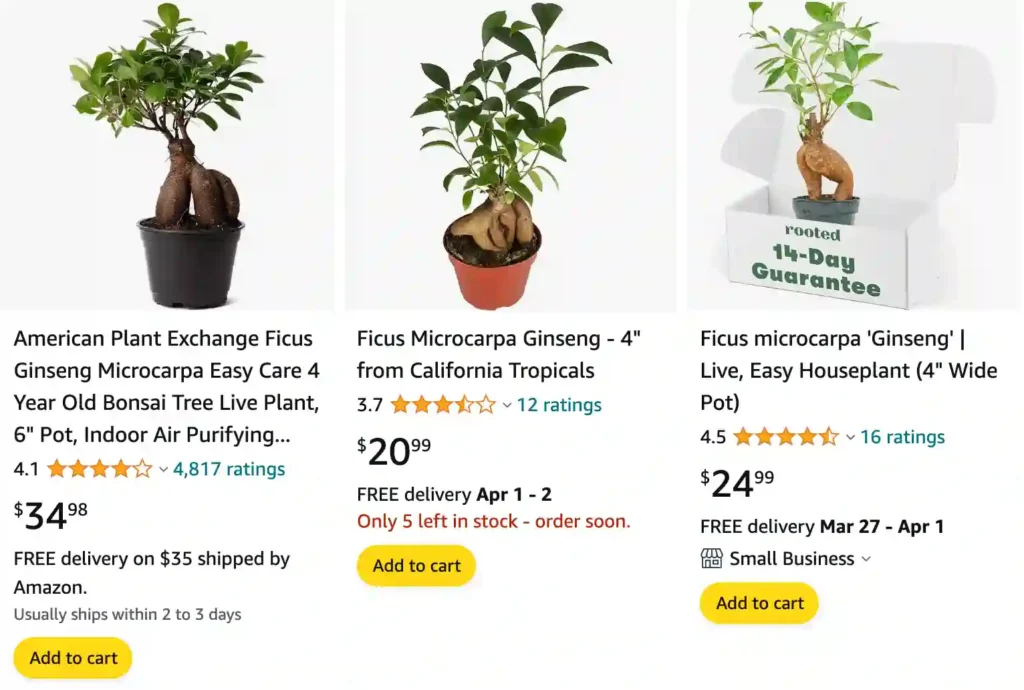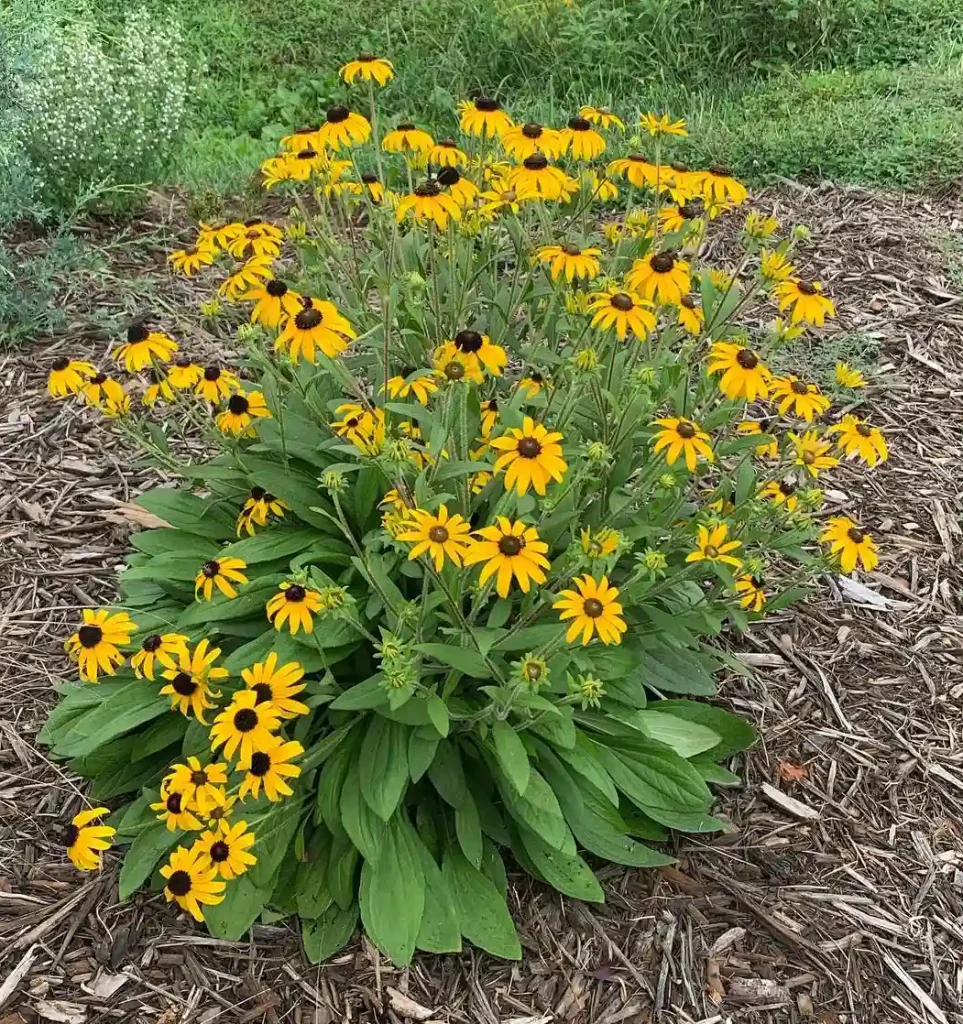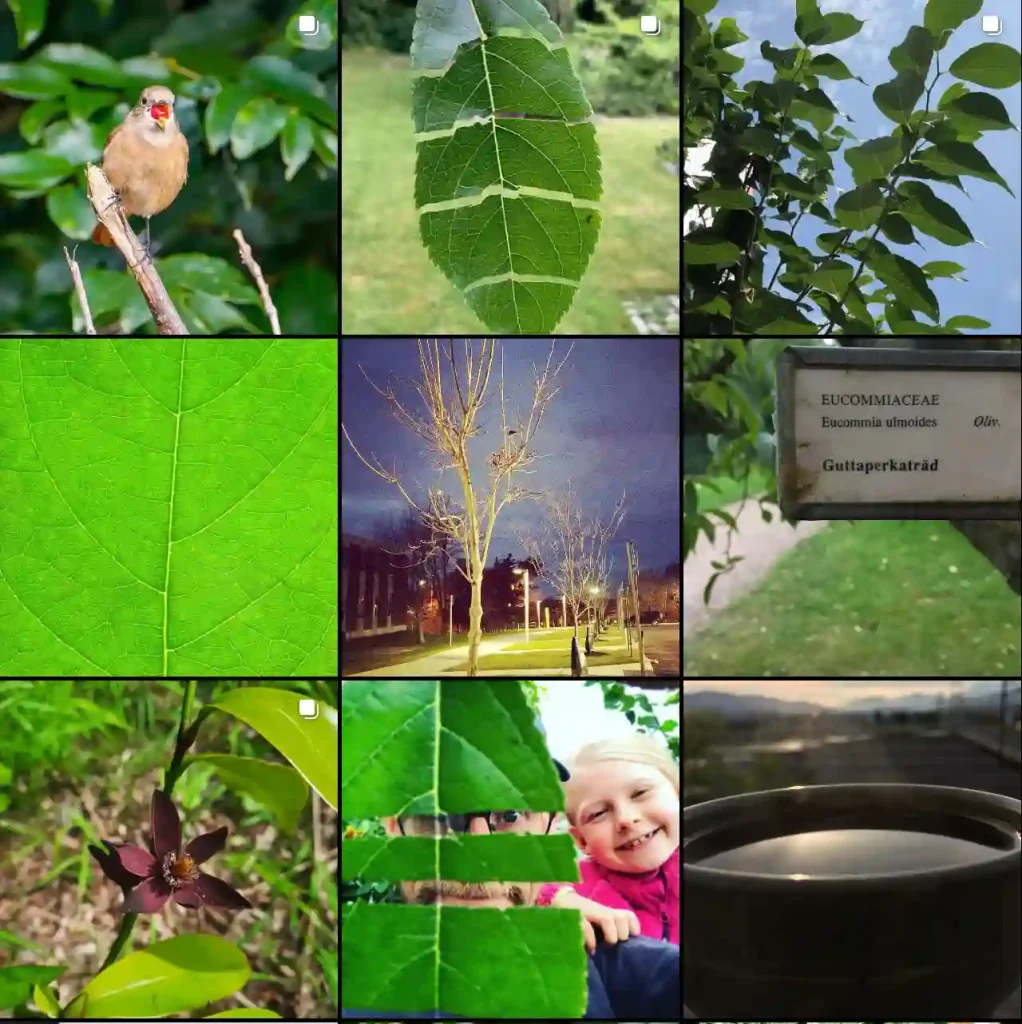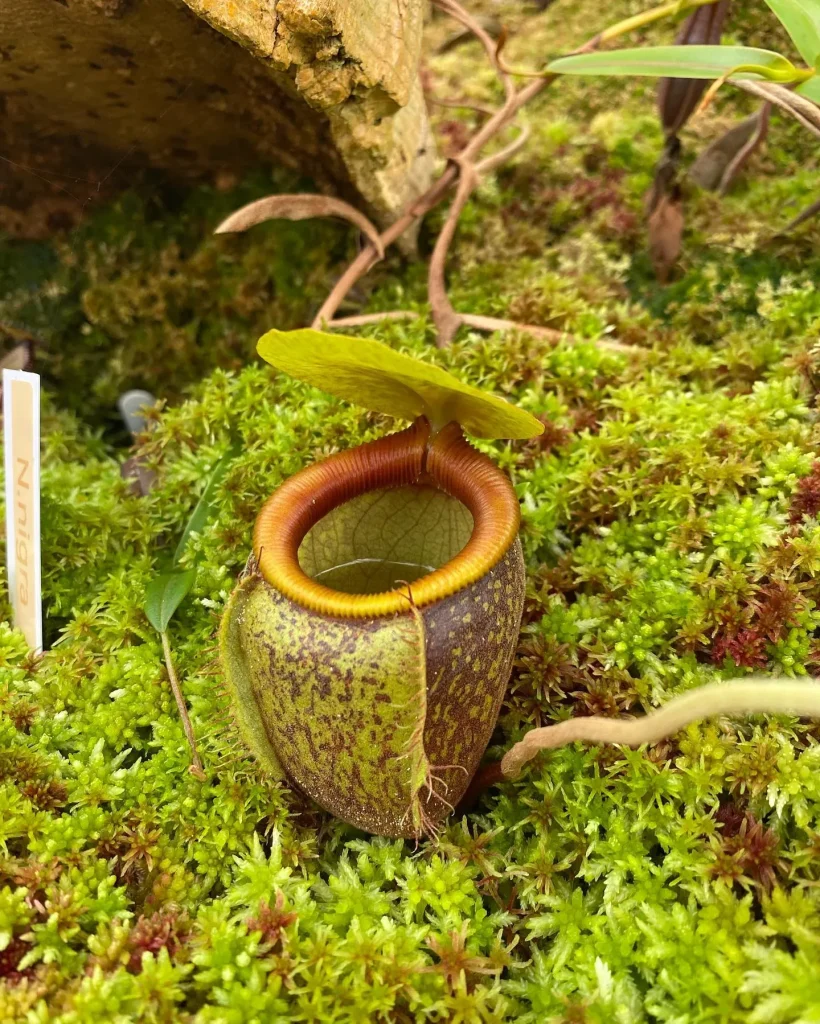
Ficus Microcarpa vs Benjamina
I find Ficus Microcarpa’s dense, bonsai-like foliage more captivating than Ficus Benjamina‘s drooping leaves.
Ficus Microcarpa vs Retusa
In my experience, Ficus Microcarpa’s thicker, more substantial trunk feels sturdier compared to the more delicate Ficus Retusa.
Ficus Microcarpa vs Dwarf Schefflera
I love how Ficus Microcarpa’s compact growth habit contrasts beautifully with the Dwarf Schefflera’s more open and airy form.
880 Species in Genus Ficus
How to care for ficus microcarpa ginseng?
Caring for Ficus microcarpa Ginseng involves providing it with the right conditions for growth. It prefers bright, indirect light and consistent temperatures between 65°F to 75°F. I make sure to place mine near a window where it gets plenty of filtered sunlight throughout the day. It’s important to avoid placing it in direct sunlight, as this can scorch the leaves.
How to propagate ficus microcarpa?
Propagating Ficus microcarpa is relatively easy and can be done through stem cuttings. I’ve successfully propagated mine by taking a cutting with a few leaves and placing it in a container with well-draining soil. I keep the soil consistently moist until roots develop, which usually takes a few weeks.
How to prune ficus microcarpa ginseng?
Pruning Ficus microcarpa Ginseng helps maintain its shape and encourages new growth. I trim mine occasionally to remove any dead or damaged leaves and to control its size. I prefer to prune in the spring when the plant is actively growing, as this allows it to recover more quickly.
How to water ficus microcarpa ginseng?
Watering Ficus microcarpa Ginseng requires a delicate balance to prevent both underwatering and overwatering. I typically water mine when the top inch of soil feels dry to the touch, usually once every 1-2 weeks. It’s essential to ensure that the pot has proper drainage to prevent waterlogged soil, which can lead to root rot.
Is ficus microcarpa toxic to cats?
Ficus microcarpa is considered toxic to cats if ingested. As a cat owner, I take precautions to keep my pets away from the plant and place it in an area where they can’t access it. If you suspect your cat has ingested any part of the plant, it’s essential to contact your veterinarian immediately.
How to bonsai ficus microcarpa?
Bonsai-ing Ficus microcarpa involves careful pruning and training to create the desired shape. I’ve seen some beautiful bonsai specimens of this plant, and it’s a rewarding hobby for those with patience and attention to detail. I haven’t personally tried bonsai-ing mine, but I admire the artistry involved.
Why is my ficus microcarpa losing leaves?
If your Ficus microcarpa is losing leaves, it could be due to several factors, including overwatering, underwatering, or environmental stress. I recommend checking the soil moisture level and adjusting your watering routine accordingly. Additionally, make sure the plant is not exposed to drafts or sudden temperature changes, which can cause leaf drop.
Can you cut the roots of a ficus microcarpa?
You can cut the roots of a Ficus microcarpa during repotting to control its size or address root-bound issues. However, it’s essential to be cautious and only trim roots that are circling the pot excessively. I’ve done root pruning during repotting without any issues, but it’s best to avoid excessive root cutting, as this can stress the plant.
Does ficus microcarpa flower?
Ficus microcarpa does produce flowers, although they are not very conspicuous compared to the foliage. The flowers are small and typically greenish-yellow in color, and they may not be noticeable unless you look closely. However, Ficus microcarpa is primarily grown for its ornamental foliage rather than its flowers.
Does ficus microcarpa have fruit?
While Ficus microcarpa does produce fruit in its natural habitat, indoor specimens are unlikely to fruit unless they are grown under specific conditions. The fruit is small and spherical, typically green when immature and turning purplish-black when ripe. However, fruiting is rare in indoor settings and is not typically a concern for most growers.
If i die, water my plants!



